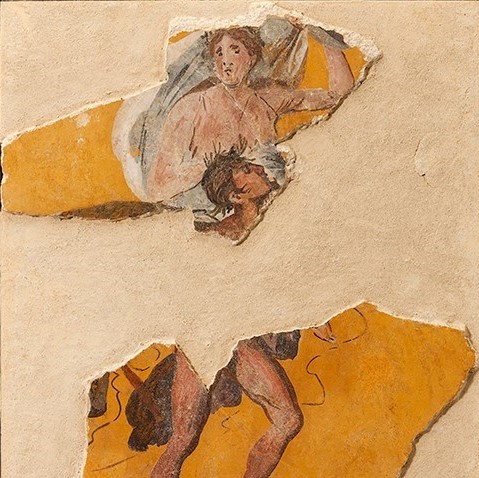
Collections:
Description:
Roman Wall-Painting
Introduction by J.R. Green
The practice of decorating the walls of private houses with wall-paintings (as opposed to those of sanctuaries) seems to have developed during the Hellenistic period, primarily, one may suppose, in the palaces of the successors of Alexander. The greater part of our knowledge of ancient painting comes from the cities destroyed by the eruption of Vesuvius in AD 79 and this is probably the source of all but one of our fragments. The development of the various styles of painting at sites such as Pompeii seems to have been fairly rapid and it is not unreasonable to see this development as due in some measure to Hellenistic influence. One also finds paintings incorporated in these schemes that are undoubtedly of Greek origin, whether from Greece proper or from other areas such as Alexandria, but it is important to remember that Pompeian wall-painting is far from totally derivative and that aspects of approach, as in the other arts and in architecture, are Roman.
Of the general books, amongst the most useful are A. Maiuri, Roman Painting (Geneva 1953), A. Stenico, Roman and Etruscan Painting (London 1963) (which has a brief text but a good series of illustrations), M. Borda, La Pittura romana (Milan 1958), and R. Ling, Roman Painting (Cambridge 1991). On questions of technique there is a useful article by A. Barbet and C. Allag, “Techniques de préparation des parois dans la peinture murale romaine”, Melanges d’Archéologie et d'Histoire (Ecole Française de Rome) 84, 1972, 935-1069.